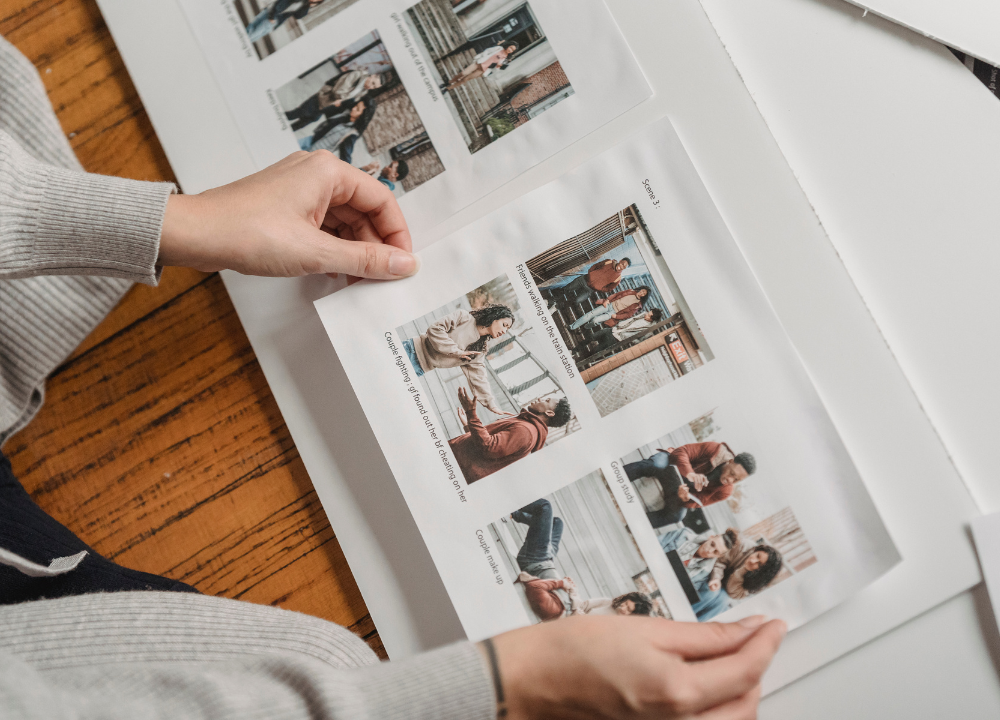Portrait orientation lock is a feature found on many devices. It helps users control how their screens display content.
In our fast-paced digital world, we often use smartphones and tablets for various tasks. Sometimes, the screen rotates when we move the device. This can be frustrating during a video call or while reading. The portrait orientation lock keeps the screen in a vertical position.
It prevents unwanted changes in display. Understanding this feature can improve your device experience. This guide will define portrait orientation lock and explain how to use it effectively. Whether you are a tech novice or an experienced user, knowing this feature can enhance your daily use. Let’s dive into the details and discover its benefits.
Benefits Of Portrait Orientation Lock
Portrait Orientation Lock is a useful feature on smartphones and tablets. It keeps the screen in a vertical position. This can improve the user experience in many ways. Knowing the benefits of Portrait Orientation Lock can help you use your device better.
Improved Reading Experience
Using Portrait Orientation Lock can greatly enhance your reading experience. Many people prefer reading in a vertical layout. This layout mimics the format of traditional books and magazines. Here are some benefits:
- Consistent Layout: Portrait mode keeps text and images aligned. This makes reading easier.
- Less Eye Strain: Holding a device vertically reduces the need to turn your neck. It helps in reducing fatigue.
- Better Focus: Portrait mode limits distractions. This allows readers to concentrate on the text.
Many eBooks and articles are designed for portrait orientation. Users find it easier to scroll through long texts without losing their place.
| Feature | Benefit |
|---|---|
| Text Alignment | Improves readability |
| Comfort | Reduces neck strain |
| Focus | Enhances concentration |
Portrait Orientation Lock is especially useful for reading apps. It keeps content in a familiar format. This helps readers feel comfortable and engaged.
Enhanced Photography
Portrait Orientation Lock is also beneficial for taking photos. Many users prefer shooting images in vertical mode. This is especially true for portraits and full-body shots. Here are some reasons why it is helpful:
- Better Framing: Portrait mode allows for a more natural framing of subjects.
- Focus on Details: Vertical images highlight the subject’s features better.
- Improved Composition: Many photography techniques work better in portrait orientation.
Portrait Orientation Lock helps photographers maintain their desired angle. This avoids unwanted rotation of the screen while taking shots.
In addition, many social media platforms favor vertical images. Users can share their photos quickly without needing to rotate them. This makes sharing easier and keeps the focus on the subject.
| Photography Aspect | Advantage |
|---|---|
| Framing | Natural and appealing |
| Subject Focus | Highlights features |
| Sharing | Easy on social media |
Portrait Orientation Lock makes photography more effective. It helps both casual and serious photographers capture better images.
How To Enable Portrait Orientation Lock
Portrait Orientation Lock helps keep your screen in a specific position. It prevents your device from rotating when you turn it. This feature is helpful for reading, browsing, or watching videos. Knowing how to enable Portrait Orientation Lock is important for a better user experience on your device.
On Ios Devices
Enabling Portrait Orientation Lock on iOS devices is simple. Follow these steps:
- Open the Control Center by swiping down from the top-right corner (iPhone X and later) or swiping up from the bottom (iPhone 8 and earlier).
- Look for the lock icon with a circular arrow around it.
- Tap the icon to enable Portrait Orientation Lock. The icon will turn red, indicating it is on.
To check if the lock is active, rotate your device. The screen should stay in portrait mode.
Here is a quick table summarizing the steps:
| Step | Action |
|---|---|
| 1 | Open Control Center |
| 2 | Find the lock icon |
| 3 | Tap to enable |
Portrait Orientation Lock is useful when you want to prevent unwanted screen rotation. Use it while reading or viewing photos.
On Android Devices
Enabling Portrait Orientation Lock on Android devices varies by manufacturer. Here are general steps to follow:
- Swipe down from the top of the screen to open the notification panel.
- Look for the rotation icon or the word “Auto-rotate.”
- Tap the icon until it shows “Portrait” or locks the rotation.
When Portrait Orientation Lock is on, your screen stays upright. You can check by turning your device. The screen should not change orientation.
Different Android devices may have slightly different settings. Here’s a quick guide:
- Samsung: Go to Settings > Display > Screen rotation.
- Google Pixel: Go to Settings > Display > Advanced > Rotate.
- Huawei: Go to Settings > Display > Auto-rotate screen.
Portrait Orientation Lock helps maintain the screen position you prefer. It is especially handy for reading or watching videos.
Common Use Cases
Portrait Orientation Lock helps keep your device in a specific position. This is especially useful in several situations. Users can choose when to lock their screens. Common use cases include reading e-books and watching videos. These activities benefit from a stable screen orientation. Let’s explore how this feature enhances these experiences.
E-books And Articles
Reading e-books and articles often requires a fixed screen position. Portrait Orientation Lock allows readers to hold their devices comfortably. This feature keeps text upright, making it easier to read. Here are some benefits of using this lock:
- Consistent Layout: Keeps text and images aligned.
- Improved Focus: Reduces distractions from screen rotation.
- Enhanced Comfort: Allows for easier one-handed reading.
Many e-reader apps support this feature. Users can lock their screen when reading. This prevents accidental rotations. Below is a table that shows popular e-reader apps and their support for Portrait Orientation Lock:
| App Name | Portrait Orientation Lock |
|---|---|
| Kindle | Yes |
| Apple Books | Yes |
| Nook | Yes |
| Kobo | Yes |
Using this feature makes reading more enjoyable. Readers can immerse themselves in their content without interruptions.
Video Streaming
Video streaming is another area where Portrait Orientation Lock proves useful. Many streaming services allow users to watch videos vertically. Locking the screen helps maintain a steady view. Here are the reasons why this is beneficial:
- Stability: Prevents the video from shifting unexpectedly.
- Better Viewing Experience: Keeps the video in the desired format.
- Convenience: Easy to watch while multitasking.
Most streaming platforms support this feature. Users can enjoy their favorite shows without interruptions. Here is a list of popular streaming services and their support for Portrait Orientation Lock:
| Service Name | Portrait Orientation Lock |
|---|---|
| Netflix | Yes |
| YouTube | Yes |
| Disney+ | Yes |
| Hulu | Yes |
With Portrait Orientation Lock, users enjoy uninterrupted viewing. This feature enhances their overall streaming experience.
Troubleshooting Orientation Lock Issues
Portrait Orientation Lock keeps your device in a fixed position. Sometimes, it can cause problems. Troubleshooting these issues can help you use your device better. Here, we will explore simple steps to fix orientation lock problems.
Device Settings Check
First, check your device settings. Sometimes, a minor setting can cause the orientation lock to malfunction. Follow these steps:
- Open the Settings app on your device.
- Scroll down to find Display & Brightness or Display.
- Look for Rotation Lock or Orientation Lock.
- Make sure it is turned off. If it is on, tap to disable it.
After adjusting the settings, test your device. Rotate it to see if the screen changes. If it does not, check for the following:
- Check for any software updates.
- Restart your device.
- Reset all settings if needed.
Here is a table summarizing the steps:
| Step | Action |
|---|---|
| 1 | Open Settings |
| 2 | Scroll to Display & Brightness |
| 3 | Find Rotation Lock |
| 4 | Turn Off Lock |
Following these steps should help you fix basic orientation lock issues.
App-specific Issues
Some apps may not support orientation changes. This can cause confusion. Here are some common issues and fixes:
- Check if the app has orientation settings.
- Update the app to the latest version.
- Close and reopen the app.
Apps like games or video players often have their own settings. They may lock the orientation automatically. Here are steps to check:
- Open the app.
- Look for a settings or options menu.
- Find any orientation lock options.
Some apps may not work well with orientation lock. Try using different apps to see if the problem persists. If issues remain, consider:
- Reinstalling the app.
- Contacting the app’s support team.
These steps help troubleshoot app-specific orientation lock issues effectively.
Portrait Orientation Vs. Landscape Orientation
Understanding the difference between portrait orientation and landscape orientation is essential for using devices effectively. Portrait orientation is when the screen is taller than it is wide. It is often used for reading and browsing. Landscape orientation is wider than it is tall. It is common for videos and games. Knowing when to use each can enhance your experience.
Key Differences
Portrait and landscape orientations serve different purposes. Here are the main differences:
- Dimensions: Portrait is vertical, landscape is horizontal.
- Best Uses: Portrait is ideal for text; landscape works better for visuals.
- Device Compatibility: Most smartphones default to portrait; tablets often use landscape.
- User Experience: Portrait is easier for reading; landscape provides a wider view.
| Feature | Portrait Orientation | Landscape Orientation |
|---|---|---|
| Screen Shape | Taller than wide | Wider than tall |
| Common Uses | Reading, social media | Movies, games |
| Device Preference | Smartphones | Tablets, laptops |
Each orientation has its strengths. Portrait orientation is great for browsing the web. It allows for easier reading of long texts. In contrast, landscape orientation is perfect for watching videos. It gives a wider view for a more immersive experience.
When To Use Each
Choosing between portrait and landscape orientation depends on your activity. Use portrait orientation for:
- Reading articles or eBooks.
- Scrolling through social media feeds.
- Writing notes or messages.
Landscape orientation is better for:
- Watching movies or shows.
- Playing video games.
- Viewing presentations or slideshows.
Some apps automatically adjust to the best orientation. For example, a photo editing app may switch to landscape for editing. A reading app may stay in portrait to show more text. Knowing when to lock your orientation can improve your comfort.
Understanding these uses helps maximize the potential of your devices. Adjusting your orientation based on your needs makes tasks easier. Whether reading or watching, the right orientation enhances the experience.
Conclusion
Portrait orientation lock is a useful tool. It helps keep your screen in the right position. This feature is great for reading or taking photos. It prevents unwanted changes when you move your device. Understanding how to use it makes your experience better.
Try using portrait lock when you need stability. It can make tasks easier and more enjoyable. Now you know what portrait orientation lock is and how it works. Use it to enhance your daily device interactions. Enjoy a smoother experience every time you use your device.




